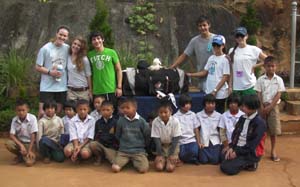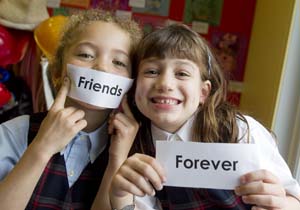 According to reading specialist Paul Kropp (Canadian author of How to Make Your Child a Reader for Life), children tend to experience reading lags as they begin elementary school, again around grade 4 and, finally, when they enter high school. Although the reasons for these lags are not absolute, several variables are at play.
According to reading specialist Paul Kropp (Canadian author of How to Make Your Child a Reader for Life), children tend to experience reading lags as they begin elementary school, again around grade 4 and, finally, when they enter high school. Although the reasons for these lags are not absolute, several variables are at play.
When children undergo significant transitions, e.g., parent-child separation upon school entrance or moving to a new school, daily routines like reading at bedtime may become disrupted. In the case of boys, peer influences may supersede activities like reading. Around ages eight to ten, boys begin to view reading as “uncool” and prefer to engage in physical and tactile activities, like sports and video games. In early adolescence, when boys and girls are going through puberty, their interests turn to one another and away from books.
Parents often ask me what they can do to combat these reading lags. Rest assured, children who live in literate households where the printed word is valued will pass through these reading lulls and return to their love of books with very little prompting from their parents. If your child falls into this category, I would recommend patience, some gentle prodding, like recommending books, and continuing to practice the literate approach you have already cultivated. Trust me, they will come around in mid- to late-adolescence. Forcing the issue too much may backfire, as teenagers are more likely to do the polar opposite of what their parents suggest. As a father of four and a teacher of many over the years, I can also advise you against reverse psychology. Our children are far too smart to be taken in by our legerdemain.
The following concrete suggestions should help you combat the dreaded reading lag.
1. The first step is to create a home atmosphere where books, magazines and newspapers are the norm, not the exception. Even though all newspapers are available online, subscribe to a daily paper. The newspaper is often the only print our children see us reading for pleasure during the day. Eventually, they will become curious enough to read the paper themselves. Doing the daily puzzles and reading the cartoons, especially with your children, are also fun ways to interact with the paper. The Gazette offers a weekly page for young students that includes word games and puzzles. In addition, subscribe to magazines for yourself and your children. Just as you may be fascinated by current events and read The Economist, your child may be passionate about sports and read Sports Illustrated (there is even a Sports Illustrated for Kids).
2. Engaging in literate activities outside the home is also extremely important. The cheapest and easiest way to do this is to take advantage of your local library. Going to the library with your child on a regular basis is a great way to cultivate the love of reading, not to mention a very pleasant parent-child experience. Libraries also offer cultural activities, reading clubs and competitions that may stimulate your child. Although they may be more expensive, occasional trips to a bookstore are imperative. Letting your children purchase their own books indicates that you value books and respect their interests. As teenagers often do not want to be seen with their parents, you may want to just make sure their library card is current and give them gift certificates to Chapters on an annual basis, for example.
3. Although this may seem odd to you, continuing to read with and to your children throughout adolescence is a positive way to combat the reading lag. Share the books you are reading, but do not foist them on your unwilling children. When you are commuting or going on family road trips, listen to audio books. Talk about books, current events and popular culture at the family dinner table. Show your children that you are interested in their passions. Above all, be an active reader yourself and leave plenty of reading material lying around the house.
Knowing and cultivating your children’s interests will reap life-long benefits. Supplementing their passions through reading, whether it be books about the sports they play or their favourite singer or actor, is an excellent way to show them you care about what they care about and to get to know your children on a deeper level. If you sense a reading lag, do not despair or overreact, simply follow the guidelines I have outlined above. However, whatever you do, do not tell them I said so. Remember, they are intelligent beings who sense overt attempts to improve them. Nonchalant subterfuge is often the best approach. —Brian Moore (Senior Department Head, English Language Arts, Communications Studies and Literacy Programs)



